Do you have a question about the Avocent ESP-4 MI and is the answer not in the manual?
Describes the ESP 4-port Multi-Interface (ESP-4 MI) serial hub's features, including its autosensing Ethernet port and multi-interface serial ports.
Details the various methods to access serial ports: redirection, Telnet, Raw TCP, modem emulation, and configuration utility.
Lists and describes the tools for configuring and managing the ESP-4 MI serial hub, including web interface, configuration utility, and files.
Lists the items included in the ESP-4 MI serial hub kit, such as the hub, power supply, and CD-ROM.
Describes the physical components of the ESP-4 MI serial hub, including connectors, LEDs, and buttons on the front panel.
Details the serial port signaling types (RS-232, RS-422, RS-485) and the use of termination for RS-422/RS-485.
Explains the configurable network interface speeds (10/100 Mbps, half/full duplex) and auto-negotiation settings.
Lists the pin assignments for RS-232 serial ports, including DCD, RxD, TxD, DTR, GND, DSR, RTS, CTS, and N/C.
Describes the adaptors available for connecting standard CAT 5 cables for RS-422/RS-485 and modem emulation connections.
Details the pin assignments for the RJ-45 shielded Ethernet connector, including transmit and receive data signals.
Describes the ESP-4 MI serial hub's power requirements, using a 5 VDC power supply with an IEC AC input connector.
Provides instructions for installing the ESP-4 MI serial hub in a tabletop environment and notes on replacement.
Outlines the steps for initiating the startup sequence, including recording the MAC address and connecting cables.
Explains how to configure the IP address, subnet mask, and gateway for the ESP-4 MI serial hub.
Details configuring ports after network information is set, specifying interface type, attributes, and connection methods.
Explains when changes to the ESP-4 MI hub's configuration take effect, whether immediately, on next connection, or after reboot.
Describes how to reinitialize the hub to factory defaults using the INIT button or reset the hub via the RESET button.
Details various methods to access serial ports: redirection, Telnet, Raw TCP server/client, modem emulation, and configuration utility.
Allows Telnet connections to serial ports, enabling data transmission via the standard Telnet protocol (reverse Telnet).
Allows TCP socket connections for data transmission using standard TCP, initiated by a remote client.
Enables the ESP-4 MI hub to connect to a remote server via TCP, transmitting and receiving data using standard TCP.
Enables ESP hub serial ports to emulate modem dial and answer functionality, accepting AT commands.
Translates telephone numbers to IP addresses for dialout applications when modem emulation is enabled.
Provides a menu-based text interface for configuring the ESP-4 MI hub, including network, ports, and features.
Defines attributes for each serial port, such as baud rate, data size, parity, stop bits, and flow control.
Lists and describes features that can be enabled or disabled, such as DHCP IP acquisition and web interface access.
Explains how to access the ESP-4 MI hub's web interface using a web browser and the hub's IP address.
Details setting and changing the administration password for the web interface and configuration utility.
Describes how to display or change network settings like IP address, subnet mask, and gateway via the web interface.
Explains how to configure port interfaces, attributes, and connection methods using the web interface.
Describes how to send a line break to an attached device via the web interface.
Shows how to view hardware details like model number, revision numbers, MAC address, and serial number.
Explains how to display and update the embedded application image and bootstrap image in the hub's flash memory.
Details how to view and modify configurable features like DHCP, SNMP, web interface, and Telnet access.
Describes how to download configuration files from a TFTP server to configure the ESP-4 MI hub.
Explains how to launch the ESP-View diagnostic utility for datascope, loopback, and status functions.
Shows cumulative statistics since the last hub reset, including uptime, idle time, and network interface counts.
Displays cumulative statistics for each port, such as status flags, received/transmitted bytes, and RS-232 signals.
Shows active connection status for serial ports and port redirection connections, including IP address and connection time.
Explains how to reboot the ESP-4 MI serial hub, typically required for configuration changes to take effect.
Resets all configurable values to factory defaults, including IP address and password, via the web interface.
Describes how to access the configuration utility via Telnet, serial connection to port 1, or enabled serial ports.
Explains the menu-based text interface of the configuration utility, including the Top Menu and Server Configuration menu.
Details setting and changing the administration password for the configuration utility, common with the web interface.
Describes how to display or change network settings like IP address, subnet mask, and gateway using the configuration utility.
Explains how to configure port interfaces, attributes, and connection methods using the configuration utility.
Describes how to send a line break to an attached device using the configuration utility.
Shows how to view hardware details like model number, revision numbers, MAC address, and serial number via the configuration utility.
Explains how to display and update flash memory images using the configuration utility.
Details how to view and modify configurable features like DHCP, SNMP, web interface, and Telnet access using the configuration utility.
Describes how to download configuration files from a TFTP server using the configuration utility.
Explains how to reboot the ESP-4 MI serial hub using the configuration utility.
Resets all configurable values to factory defaults, including IP address and password, via the configuration utility.
Shows cumulative statistics since the last hub reset, including uptime, idle time, and network interface counts via the utility.
Displays cumulative statistics for each port, such as status flags, received/transmitted bytes, and RS-232 signals via the utility.
Shows active connection status for serial ports and port redirection connections via the utility.
Explains how to display or control log information, run datascope, or escape to a shell using the configuration utility's debug menu.
Provides a sample configuration file available via the web interface, containing commands for port configuration.
Details the conventions for configuration files, including command syntax, case sensitivity, and parameter usage.
Explains how to initiate a configuration file download from a BootP/DHCP server or via web interface/utility.
Describes how to verify the completion status of a configuration file download and check for errors.
Lists the browser and JRE requirements for using the ESP-View diagnostic utility.
Explains how to launch and exit the ESP-View diagnostic utility from the hub's web interface.
Describes the datascope function for collecting, displaying, and saving serial data and control signals.
Describes the loopback function for testing ESP-4 MI hub ports and displaying statistics.
Explains the status function for displaying configuration information and traffic statistics for ESP-4 MI hub serial ports.
Details how to run the ESP-Install program from the command prompt, with and without script files.
Explains how to create installation/update command blocks for ESP serial hubs using ESP and END delimiters.
Describes how to update ESP serial hub information using the ESP-Install program.
Explains how to uninstall or remove previously installed ESP serial hubs using the ESP-Install program.
Lists and describes the commands available in the ESP-Install program for managing ESP hubs and drivers.
Provides a sample script file demonstrating removal, installation, and update commands for ESP hubs.
Describes the ESP 4-port Multi-Interface (ESP-4 MI) serial hub's features, including its autosensing Ethernet port and multi-interface serial ports.
Details the various methods to access serial ports: redirection, Telnet, Raw TCP, modem emulation, and configuration utility.
Lists and describes the tools for configuring and managing the ESP-4 MI serial hub, including web interface, configuration utility, and files.
Lists the items included in the ESP-4 MI serial hub kit, such as the hub, power supply, and CD-ROM.
Describes the physical components of the ESP-4 MI serial hub, including connectors, LEDs, and buttons on the front panel.
Details the serial port signaling types (RS-232, RS-422, RS-485) and the use of termination for RS-422/RS-485.
Explains the configurable network interface speeds (10/100 Mbps, half/full duplex) and auto-negotiation settings.
Lists the pin assignments for RS-232 serial ports, including DCD, RxD, TxD, DTR, GND, DSR, RTS, CTS, and N/C.
Describes the adaptors available for connecting standard CAT 5 cables for RS-422/RS-485 and modem emulation connections.
Details the pin assignments for the RJ-45 shielded Ethernet connector, including transmit and receive data signals.
Describes the ESP-4 MI serial hub's power requirements, using a 5 VDC power supply with an IEC AC input connector.
Provides instructions for installing the ESP-4 MI serial hub in a tabletop environment and notes on replacement.
Outlines the steps for initiating the startup sequence, including recording the MAC address and connecting cables.
Explains how to configure the IP address, subnet mask, and gateway for the ESP-4 MI serial hub.
Details configuring ports after network information is set, specifying interface type, attributes, and connection methods.
Explains when changes to the ESP-4 MI hub's configuration take effect, whether immediately, on next connection, or after reboot.
Describes how to reinitialize the hub to factory defaults using the INIT button or reset the hub via the RESET button.
Details various methods to access serial ports: redirection, Telnet, Raw TCP server/client, modem emulation, and configuration utility.
Allows Telnet connections to serial ports, enabling data transmission via the standard Telnet protocol (reverse Telnet).
Allows TCP socket connections for data transmission using standard TCP, initiated by a remote client.
Enables the ESP-4 MI hub to connect to a remote server via TCP, transmitting and receiving data using standard TCP.
Enables ESP hub serial ports to emulate modem dial and answer functionality, accepting AT commands.
Translates telephone numbers to IP addresses for dialout applications when modem emulation is enabled.
Provides a menu-based text interface for configuring the ESP-4 MI hub, including network, ports, and features.
Defines attributes for each serial port, such as baud rate, data size, parity, stop bits, and flow control.
Lists and describes features that can be enabled or disabled, such as DHCP IP acquisition and web interface access.
Explains how to access the ESP-4 MI hub's web interface using a web browser and the hub's IP address.
Details setting and changing the administration password for the web interface and configuration utility.
Describes how to display or change network settings like IP address, subnet mask, and gateway via the web interface.
Explains how to configure port interfaces, attributes, and connection methods using the web interface.
Describes how to send a line break to an attached device via the web interface.
Shows how to view hardware details like model number, revision numbers, MAC address, and serial number.
Explains how to display and update the embedded application image and bootstrap image in the hub's flash memory.
Details how to view and modify configurable features like DHCP, SNMP, web interface, and Telnet access.
Describes how to download configuration files from a TFTP server to configure the ESP-4 MI hub.
Explains how to launch the ESP-View diagnostic utility for datascope, loopback, and status functions.
Shows cumulative statistics since the last hub reset, including uptime, idle time, and network interface counts.
Displays cumulative statistics for each port, such as status flags, received/transmitted bytes, and RS-232 signals.
Shows active connection status for serial ports and port redirection connections, including IP address and connection time.
Explains how to reboot the ESP-4 MI serial hub, typically required for configuration changes to take effect.
Resets all configurable values to factory defaults, including IP address and password, via the web interface.
Describes how to access the configuration utility via Telnet, serial connection to port 1, or enabled serial ports.
Explains the menu-based text interface of the configuration utility, including the Top Menu and Server Configuration menu.
Details setting and changing the administration password for the configuration utility, common with the web interface.
Describes how to display or change network settings like IP address, subnet mask, and gateway using the configuration utility.
Explains how to configure port interfaces, attributes, and connection methods using the configuration utility.
Describes how to send a line break to an attached device using the configuration utility.
Shows how to view hardware details like model number, revision numbers, MAC address, and serial number via the configuration utility.
Explains how to display and update flash memory images using the configuration utility.
Details how to view and modify configurable features like DHCP, SNMP, web interface, and Telnet access using the configuration utility.
Describes how to download configuration files from a TFTP server using the configuration utility.
Explains how to reboot the ESP-4 MI serial hub using the configuration utility.
Resets all configurable values to factory defaults, including IP address and password, via the configuration utility.
Shows cumulative statistics since the last hub reset, including uptime, idle time, and network interface counts via the utility.
Displays cumulative statistics for each port, such as status flags, received/transmitted bytes, and RS-232 signals via the utility.
Shows active connection status for serial ports and port redirection connections via the utility.
Explains how to display or control log information, run datascope, or escape to a shell using the configuration utility's debug menu.
Provides a sample configuration file available via the web interface, containing commands for port configuration.
Details the conventions for configuration files, including command syntax, case sensitivity, and parameter usage.
Explains how to initiate a configuration file download from a BootP/DHCP server or via web interface/utility.
Describes how to verify the completion status of a configuration file download and check for errors.
Lists the browser and JRE requirements for using the ESP-View diagnostic utility.
Explains how to launch and exit the ESP-View diagnostic utility from the hub's web interface.
Describes the datascope function for collecting, displaying, and saving serial data and control signals.
Describes the loopback function for testing ESP-4 MI hub ports and displaying statistics.
Explains the status function for displaying configuration information and traffic statistics for ESP-4 MI hub serial ports.
Details how to run the ESP-Install program from the command prompt, with and without script files.
Explains how to create installation/update command blocks for ESP serial hubs using ESP and END delimiters.
Describes how to update ESP serial hub information using the ESP-Install program.
Explains how to uninstall or remove previously installed ESP serial hubs using the ESP-Install program.
Lists and describes the commands available in the ESP-Install program for managing ESP hubs and drivers.
Provides a sample script file demonstrating removal, installation, and update commands for ESP hubs.
| Model | ESP-4 MI |
|---|---|
| Ports | 4 |
| Audio Support | No |
| Form Factor | Desktop |
| Connectivity Technology | Wired |
| Data Link Protocol | RS-232 |
| Data Bits | 5, 6, 7, 8 |
| Stop Bits | 1, 2 |
| Parity | None, Odd, Even, Mark, Space |
| Power Supply | External AC adapter |
| Operating Temperature | 0 to 40 °C |
| Storage Temperature | -20°C to 60°C |
| Humidity | 5% to 90% non-condensing |
| Video Resolution | Not Applicable |
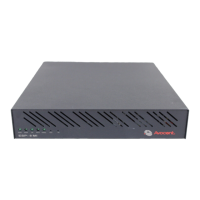


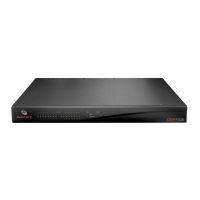
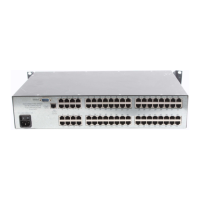
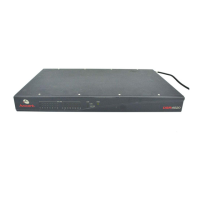

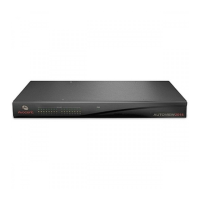
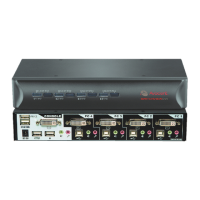
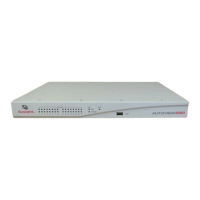
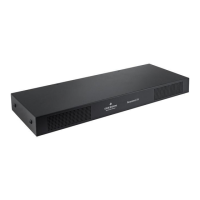

